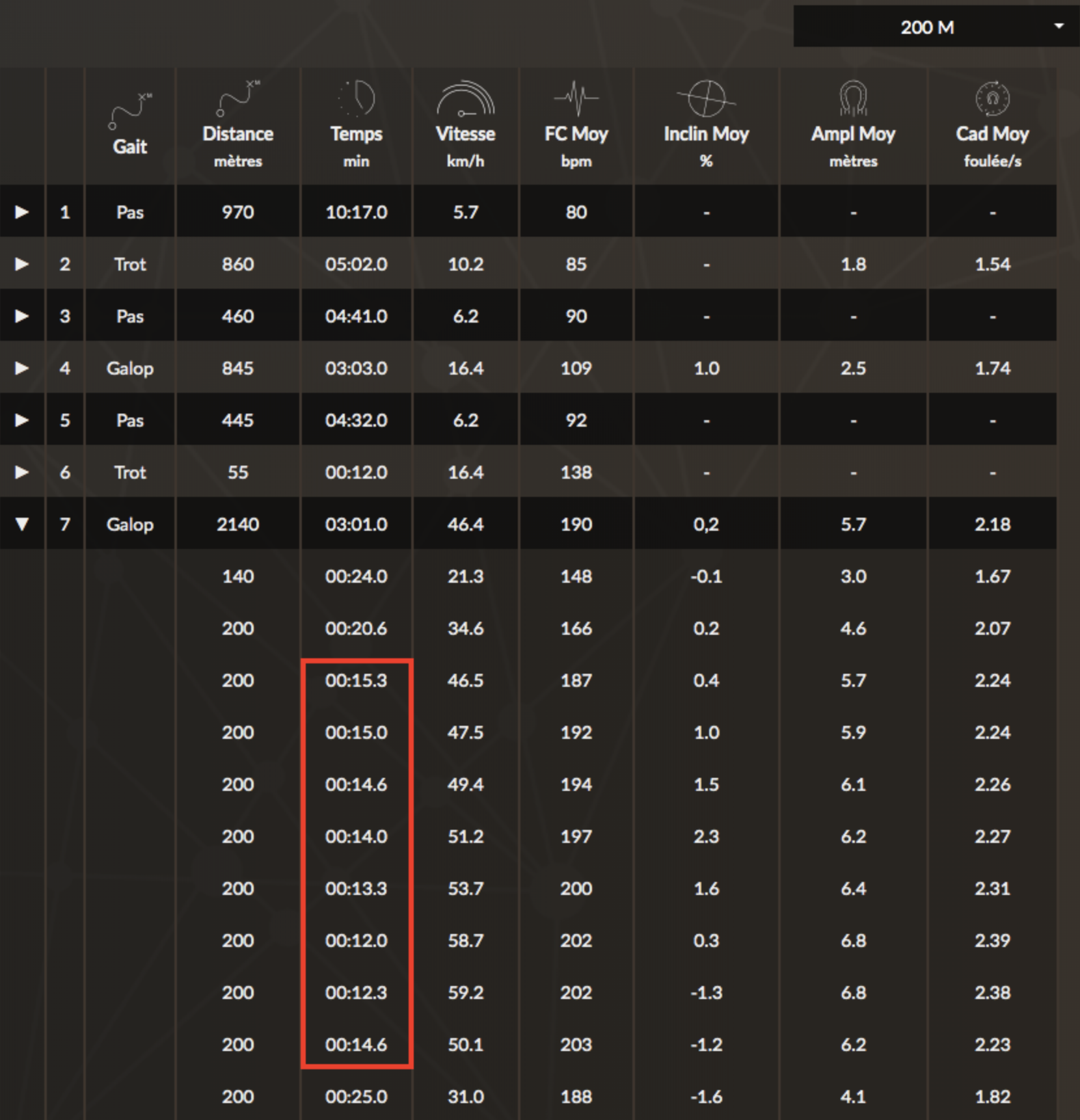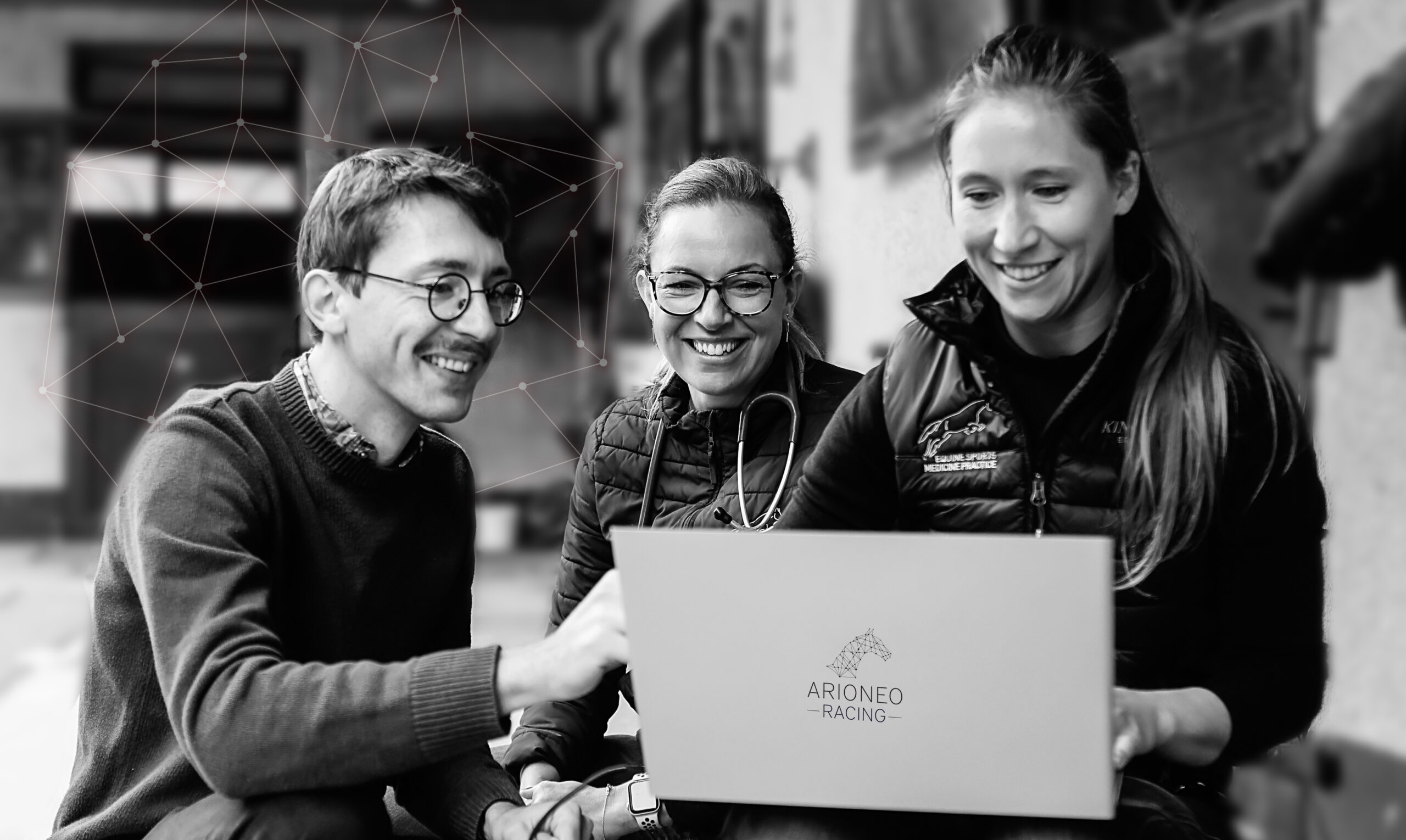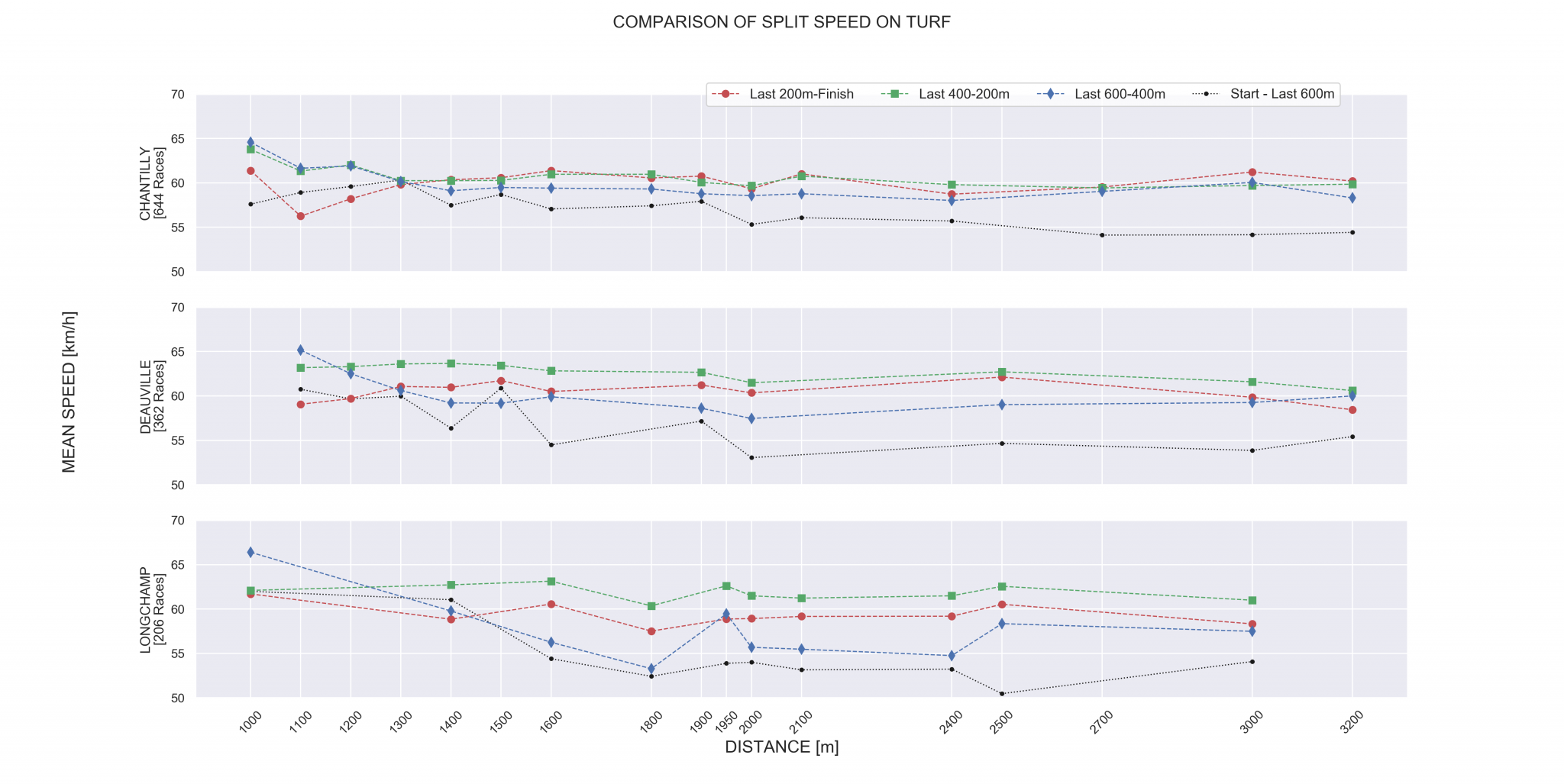ANALYSIS OF SPEED AND WINNING STRATEGIES
Who has never had shivers in the last metres of a horse race? The highlight of a race and the most beautiful impressions of speed usually occur in the last straight line, during the finish where the race ends.
The aim of this guide is to provide all the keys needed to analyse the speed of racehorses. The question of speed is a central topic as the key to winning a race lies in the management of speed throughout the race. All races are different and many events disrupt the evolution of speed during the race.
1. SPEED ANALYSIS DURING THE RACE
To understand how the parameters influence the race, it is interesting to look at how the races are ridden and therefore answer the different questions that one can ask when watching races.
SPLIT TIMES
To address the issue of speed in racing, split times and intervals are an ideal tool. They can provide a very relevant insights on how races are ridden. Indeed, they allow the different phases of the race, acceleration strategies and speeds in the finish line to be analysed.
Let’s analyse split times on the Chantilly and Deauville racecourses. In short distance races (1300m and less), the average speed of the last 200m is the lowest and the last 600-400m are run faster than the last 400-200m. This clearly highlights the fact that horses are thrown at a high speed but in the last 200m they have to slow down with a clear break in speed. Finishing horses are those capable of maintaining high speed for as long as possible rather than those with the greatest acceleration capacity. This type of behavior is also found in Longchamp races up to 1400m.
2. FACTORS INFLUENCING SPEED
TRACK DESIGN
What is the influence of the track layout on the speed during the race?
The layout of racecourses is designed to ease the natural locomotion of racehorses. Indeed, the curves are worked to compensate for the effect forced on horses in the turns. The centrifugal force tends to push horses towards the outside of the bend. The tighter the curve, the greater the centrifugal force. This influences the horses’ locomotion and puts an extra strain on them.
Poor design leads to asymmetry in gait which can lead to injury.
Comparing the running times of 1600m at Deauville in straight and curved races for condition and handicap races, it can be seen that races with curves are on average 11% slower than straight races.
THE INFLUENCE OF SHOEING
Why does unshoding improve the trotter’s speed?
There are three reasons :
- Lightness: although shoes weigh only 200g, they greatly influence the horses’ locomotion and therefore their speed.
- More natural gait: horses unshod tend to make fewer mistakes.
- Better irrigation and oxygenation of the foot: unshoding improves the blood pumping system which allows good oxygenation of the blood and optimal perfusion of the tissues.
Measuring the differences in speed during training, shod and unshod, allows to collect objective data on the preferences of the horses.
THE INFLUENCE OF TRACK TYPES AND CONDITIONS ON SPEED
How does the quality of the ground influence the speed of the race?
Every horse is different and moves naturally better on specific types of tracks. Each horse has 1, 2 or 3 preferences depending on his locomotion profile. Monitoring the horses on a daily basis on a track in different weather conditions helps to define these preferences. Indeed, a horse with a reduced speed on heavy terrain and a high heart rate experiences difficulties and spends a lot of energy to move around. Heavy terrain is therefore unsuitable for this horse while another could easily run over it.
It is important to take into account preferences in order to best adapt engagement decisions and maximise the chances of success.
3. SPEED WORK DURING TRAINING
THE HORSE’S RESPONSE TO THE REQUIRED EFFORT
Daily monitoring of a racehorse allows to assess his speed abilities and his response to the effort. The monitoring of speed and heart rate is a useful tool to determine the energy metabolism of each horse as well as its response to the effort required.
With training, the body optimises the processes of energy creation and consumption. At a given speed, it needs less energy and therefore less oxygen. This leads to a lower heart rate at that speed. A trained horse “pushes back its MVA threshold”, i.e. he will be able to run faster and longer without producing lactic acid.
INDIVIDUALISATION OF TRAINING
Once we know a horse’s response to the various training exercises, it is possible to assess his strengths and weaknesses in order to individualise the work. This allows the potential of each horse to be improved and fully explored, while respecting his limits.
The individualisation of the work also involves analysing the horse’s fitness conditions before a race in order to set up a programme that is adapted and individual to each horse.
Speed and heart rate data allows to maximise the chances of success.
SET STANDARDS OF COMPARISON
The analysis of speed during training is a major asset in the detection of future performers. For example, to assess the speed aptitudes of a young horse, it is possible to compare one of his training sessions (with the same characteristics) with one of a 4 year old Group 1 horse at the time of his 2 years old.
This analysis sharpens the trainer’s eye and feeling. We can then quantify the speed and compare the times of the same horse over a defined period.
ANALYSIS OF TRAINING SPLIT TIMES
Altough split times are well known on the racetrack, they can be neglected in training. They are a valuable aid to engagement as they allow an assessment of a horse’s ability to run a race.
The table of split times is particularly interesting when preparing for a race. Thanks to the tracking data set up by racecourses, you can get the past split times of a target race. By analysing them with the training split times, you can get a good idea of the progress of your horse’s preparation.

If you wish to implement connected solutions to collect cardio, speed and locomotion data, don’t hesitate to call on one of our experts!



